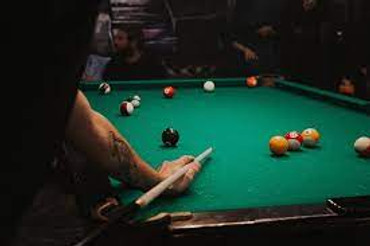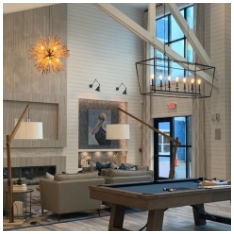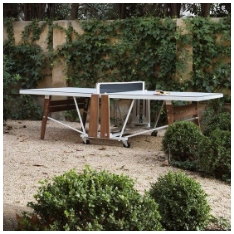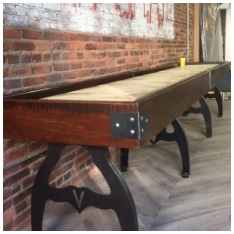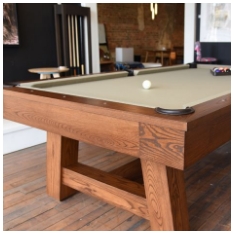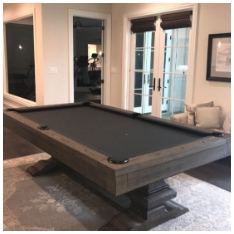Pool is a game that demands precision, consistency, and smooth gameplay. When you strike the cue ball, you expect it to roll straight without bouncing or veering off course. To make this possible, pool tables are built with a strong and stable playing surface. Slate has become the gold standard for professional and high-quality pool tables. But why are pool tables made of slate instead of other materials like wood, MDF, or plastic?
What Is Slate?
Slate is a natural stone formed over millions of years from compressed clay and volcanic ash. It splits into flat, smooth layers, making it ideal for use as a tabletop surface. When cut and polished, slate creates an even, durable base that supports accurate gameplay.
Because pool is a game of geometry and physics, the surface must remain completely level. Slate provides exactly that—precision and reliability unmatched by synthetic alternatives.
A Brief History of Slate in Pool Tables
The use of slate in pool tables dates back to the early 19th century. Before slate became popular, tables were often made of wood. While wood was cheaper, it warped easily due to changes in temperature and humidity. This caused balls to roll unpredictably, frustrating players.
Around the 1830s, slate was introduced in Europe and later in America as the premium choice for billiards. Its natural resistance to warping and its smooth finish made it the obvious material for tables in clubs, competitions, and homes of serious players. Over time, slate became the industry standard, and today nearly all professional-grade pool tables are built with slate.
Why Are Pool Tables Made Of Slate? Key Reasons
Let’s explore the main reasons slate is chosen for pool tables.
1. Durability and Longevity
Slate is incredibly strong and can last for decades if maintained properly. Unlike wood or engineered materials, slate doesn’t warp, crack, or lose shape easily. Even with regular play, slate tables maintain their structure and function for generations.
2. Perfectly Flat Playing Surface
A level playing field is essential in pool. Slate can be precision-ground and polished to create a perfectly flat surface. Manufacturers often cut slate into three pieces (called a three-piece slate bed) for easier installation and to ensure even leveling. This guarantees consistent ball roll and accurate shots.
3. Resistance to Environmental Changes
Wood expands and contracts with changes in humidity and temperature. Over time, this leads to bumps and dips in the surface. Slate, on the other hand, remains stable under varying conditions. This makes it the best choice for both casual players and professional competitions.
4. Professional Standards
Tournaments and professional leagues require slate pool tables. The World Pool-Billiard Association (WPA) specifies slate beds in its regulations. If you want to practice under the same conditions as professionals, slate is the only option.
5. Improved Gameplay Experience
When you ask, “Why are pool tables made of slate?” one of the simplest answers is the quality of play. Balls roll smoothly, shots are predictable, and players can focus on skill rather than table imperfections. This elevates the experience, making the game more enjoyable and fair.
Slate vs. Non-Slate Pool Tables
Not all pool tables are built with slate. Entry-level and budget-friendly tables may use MDF (medium-density fiberboard), plywood, or other synthetic surfaces. Here’s how slate compares:
- Slate Tables
- Extremely durable
- Consistent, professional play
- Higher cost
- Heavy and difficult to move
- Non-Slate Tables
- Lightweight and portable
- Lower cost
- Susceptible to warping and damage
- Shorter lifespan
While non-slate tables can be good for casual family use, anyone who values precision and long-term quality will prefer slate.
Types of Slate in Pool Tables
There are a few variations of slate construction used in modern pool tables:
Single-Piece Slate
- Entire playing surface is cut from one piece of stone.
- Provides seamless play but is extremely heavy.
- Difficult to move and install.
Three-Piece Slate
- Standard in most high-quality tables.
- Easier to transport and assemble.
- Can be leveled precisely at installation.
Precision-Milled Slate
- Ground and polished with advanced machinery.
- Ensures maximum flatness and smoothness.
- Used in professional-grade tables.
The Manufacturing Process of Slate Pool Tables
Creating a slate pool table is a detailed process:
- Quarrying: Large blocks of slate are extracted from quarries.
- Cutting: The stone is sliced into slabs and shaped into the size of a pool table.
- Polishing: Each slab is ground to create a flat and smooth surface.
- Framing: The slate is installed into the wooden or metal frame of the table.
- Cloth Covering: Finally, the surface is covered with billiard cloth (felt) to complete the table.
This craftsmanship is part of what makes slate pool tables premium in both price and performance.
Caring for a Slate Pool Table
Although slate itself is durable, the table requires proper care:
- Leveling: Over time, floors may shift. Regularly check that the slate remains level.
- Cloth Maintenance: Keep the felt clean and free of dust.
- Avoid Moisture: Protect the table from damp environments, as moisture can affect the wood frame.
- Professional Service: For repairs or re-felting, use professional services to avoid damage.
With proper care, a slate pool table can last a lifetime.
Are Slate Pool Tables Worth the Investment?
Slate tables are more expensive than non-slate alternatives, but the benefits outweigh the cost for serious players. You’re not just buying a table—you’re investing in an authentic playing experience that remains reliable for decades.
For those who play occasionally and need something lightweight, a non-slate table may be practical. However, for anyone asking, “Why are pool tables made of slate?”, the answer is clear: slate ensures accuracy, durability, and professional-level gameplay.
Conclusion
So, why are pool tables made of slate? Because slate offers the most reliable, smooth, and long-lasting playing surface possible. From professional tournaments to home game rooms, slate tables have proven themselves for nearly two centuries.
If you value precision, consistency, and a true billiards experience, slate is not just a luxury—it’s a necessity. While other materials may be cheaper or lighter, nothing matches the performance of slate.
